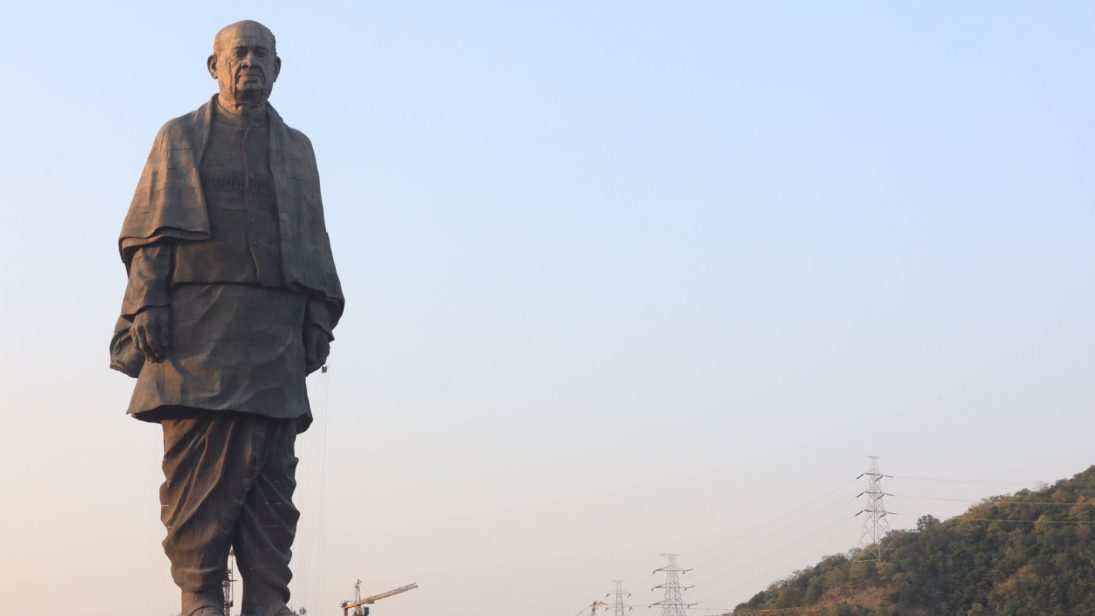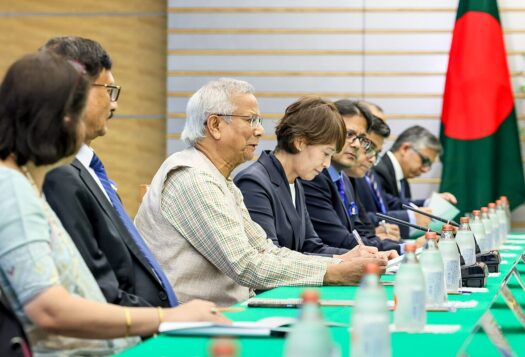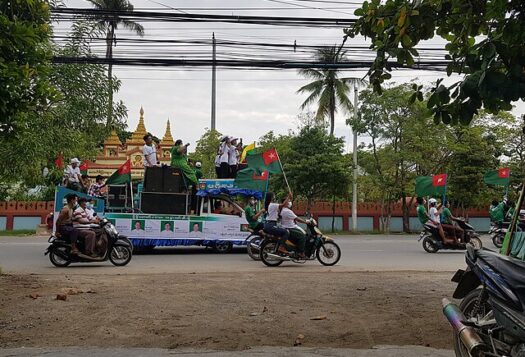
India has built the world’s tallest statue, the Statue of Unity, on a river island of the Narmada River in Gujarat. The statue is a 305-foot depiction of Sardar Vallabhbhai Patel, the first home minister of independent India and senior leader of the Indian National Congress (INC) party. Prime Minister Narendra Modi of the Bharatiya Janata Party (BJP) unveiled the $400 million USD statue last fall, where he proclaimed the monument was to be a “source of unity” for the country. Yet another statue under construction in Mumbai has been described as a “pet project” of the BJP government: a massive 700-foot memorialization of the 17th-century warrior-king Chaatrapati Shivaji Maharaj.
To understand the construction of thesestatues and the BJP government’s promotion of them, one must understand theidentity politics of iconography and its linkages with electoral politics incontemporary India.
Imagesof a Nation
The purpose of building monuments is to invent a homogenous identity that reflects the ideology of a nation’s leadership and political ambience. The idea of the imagined nation of India germinated during the anti-colonial struggle. Prior to colonization, India was fragmented in princely states, village republics, and primordial identities. It was in the anti-colonial movement that the Indian political elite projected India as a single entity to mobilize fragmented anti-colonial forces. The image of Bharat Mata (Mother India) emblematized patriotism and necessitated sacrifice for the pride of a motherland.
After India became a democracy, the CongressParty, the leaders of which led India to its independence, had to cultivate apolitical identity for itself to support its continuing exercise of power. Sincethe INC had no competitive political challenge during the initial days, it waseasy for it to project itself as a party of the masses –a catch-all partyencompassing all identities in Indian society. Methods to cultivate thisidentity included the mass production of monuments, the commemoration of publicdays, and the establishment of national heroes.
TheNew Politics of Symbolism
By the time the BJP entered Indian politics, the INC government had already hegemonized the politics of symbolism. Contradicting the INC’s pluralistic image of itself, the BJP projected itself as a conservative-majoritarian party with a tilt towards Hindutva, an ideology of Hindu cultural nationalism. The party, founded in 1980, rose to political prominence by gaining 117 seats in the Lok Sabha in the 1991 elections on the heels of the BJP-led Ram Rath Yatra and the Hindu-Muslim riots of 1990. The BJP adopted Hindutva as its official credo in the 1989 Palampur resolution.
By the time the BJP entered Indian politics, the INC government had already hegemonized the politics of symbolism. Contradicting the INC’s pluralistic image of itself, the BJP projected itself as a conservative-majoritarian party with a tilt towards Hindutva.
Since the INC’s politics of symbolism were rooted in the struggle for independence, the BJP had to devise a different set of symbols—monuments, days, and heroes—to gain an edge over the INC. The BJP thus manufactured a narrative of a Hindu nation, free from traces of secularism and colonial inheritance. Their iconography harkens back to the ideology of colonial era leaders such as V.D. Savarkar, who headed the Hindu Mahasabha and was involved in rebellions against British colonial rule. Savarkar’s Hindutva ideology is exclusionary – it proclaims that the sacred land of Hindustan belongs to Hindus united by the “bonds of common blood” and that Muslims have long been “foreign invaders.”
The glorification of an ancient Hindu past began in the 20thcentury, when Sadar Patel – the man depicted in the Statue of Unity – started a campaign to rebuild the Somnath temple, now located in Gujarat, but previously located in the Muslim-ruled Junagarh state prior to partition and directly after Indian independence. At the time, as well as in recent years, the destruction of the temple was given a communal angle and its restoration became a matter of pride for the Hindu right.
The second most important symbolism of Hindutva pride was Babri Masjid located in Ayodhya, Uttar Pradesh. A section of Hindus claim that Lord Ram was born in Ayodhya and the founder of the Mughal Empire, Babur, erected a mosque on his birthplace as a “victory monument.” Therefore, the logic goes, a grand Ram temple must be built at the same place. The Babri Masjid was razed on December 6th, 1992 by a large crowd of Hindu Kar Sevaks. This politics of monument symbolism is linked to the mobilization and polarization of the Hindutva constituency.

Symbolism Permeates Electoral Politics
Muslim otherization has become an instrument of political mobilization among the Hindutva constituency. In the last five years, Muslim representation in Indian politics has been eroded to near invisibility. Muslims are 14.2 % of the Indian population, but in 2014 only 22 Muslim parliamentarians were elected in the house of 543. In that election, the BJP fielded 428 candidates, including seven Muslims, of whom none were elected. Thereafter, the BJP won many state elections. A study in 2018 found that there were only 4 Muslims out of 1418 BJP Members of the Legislative Assembly (MLAs). In the state election of Uttar Pradesh, which has 403 legislative assembly seats, the BJP did not give a ticket to any Muslim in 2017. The message was loud and clear: the BJP does not need Muslim endorsement, and Hindu majoritarian support will be enough.
In this grand design of majoritarian polarization, the optics of Hindutva symbolism are fitting. In their political praxis, the BJP has appropriated and projected ideologues and icons that have rekindled Hindu nationalism. The list of their icons ranges from statues of Shivaji, portrayed as the symbol of Hindu pride who fought against the “tyrannically” Islamic empire of Aurangzeb, to Maharana Pratap, who fought against the Muslim Akbar, to Nathuram Godse, who assassinated Mahatma Gandhi for allowing Muslims to stay in India after the partition. The latest case of appropriation is that of Sardar Patel, who was a member of the INC, because he unified India’s princely states into one Indian nation. More importantly, he compelled the Muslim Nizam of Hyderabad and Nawab of Junagarh to accede their states to India. Some Hindutva forces in the BJP believe that if Sadar Patel had been India’s first prime minister, the country could have become a better place for Hindu nationalism to take root.
In the state election of Uttar Pradesh, which has 403 legislative assembly seats, the BJP did not give a ticket to any Muslim in 2017. The message was loud and clear: the BJP does not need Muslim endorsement, and Hindu majoritarian support will be enough.
After Patel’s appropriation, the symbol of Lord Ram returned to electoral politics. The BJP, which failed to fulfill its promise of the construction of Ram Temple in its 2014 manifesto, has proposed the construction of a grand Ram statue in Ayodhya. Since the matter is proceeding legally, the BJP is under pressure from its alliance partners ahead of the 2019 Lok Sabha elections to pass a law to build a statue near the disputed land.
The recent remarks of Amit Shah echo these politics. The BJP president equated the general elections to the battle of Panipat, saying that BJP’s defeat could lead to the enslavement of Hindus. Contextually, it was the third battle of Panipat in which Marathas lost to Muslim rulers in 1761. Thereafter, Prime Minister Narendra Modi also dubbed Congress rule as Sultanate and accused them of ignoring India’s glorious civilization. Most recently, a BJP leader called INC President Rahul Gandhi Aurangzeb, the last emperor of the Congress sultanate. Such a comparison is humiliating as the Mughal ruler was known to have desecrated Hindu temples.
In the calculus of Hindutva politics, these symbols and icons figure into the polarization of identities ahead of the upcoming polls. The BJP, which earned a decisive mandate in 2014 election on its promise of development, has taken refuge in Hindutva after failing to deliver on the economic front. In such an evolving scenario, even the INC, which was once labelled a Muslim appeasement party, is embracing the image of soft-Hindutva party to get rid of that label. The signposts are appearing that in the absence of a development narrative, competitive Hindutva – hard or soft – may take center stage in the 2019 Indian elections.
Image 1: Narendra Modi via Twitter
Image 2: NurPhoto via Getty


